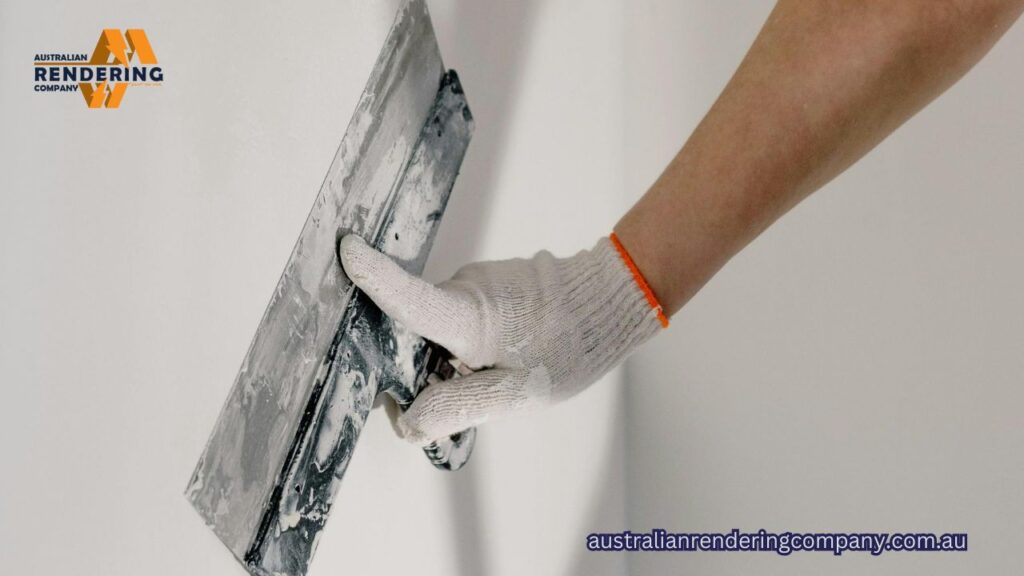A good render finish is very important in terms of aesthetics as well as protection from the weather in Australia. Australian Rendering Company has been in existence for more than 30 years. They specialise in rendering services in Melbourne.
One way of ensuring that homes are safe from the weather is by using a coating such as cement render. Obtaining a pro finish, it is important that one knows the right techniques, as well as materials. We, at Australian Rendering Company, use acrylic, cement, and cladding for long-lived, good-looking results.
To get services of expert rendering call Australian Rendering Company at 0466 943 872. Or email contact@australianrenderingcompany.com.au.

Various rendering materials and their properties
It is important to know about different materials in order to achieve smooth render. The right render is dependent on the surface and the look you are trying to achieve. Australian rendering company provides services of a variety of finishes, including acrylic, cement and concrete; each type comes with its advantages.
Acrylic Rendering: Benefits and Applications
Acrylic rendering has the advantages of flexibility and durability. It is good for moving and breaking surfaces. The acrylic render ability to be flexible allows it to move with the surface without damage.
It dries quickly and does not crack easily, ideal for quick assignments. Acrylic can also be in various colors and finishes; thereby, it is a No.1 for appearance.
Cement Rendering: Durability and Versatility
Cement rendering is a traditional option, which is famous for its durability. It performs in a variety of surfaces. Being durable cement render is good even for inside and outside, able to withstand severe weather.
Cement may vary in texture and colour. However, care is needed to be taken of it to prevent cracks. Key to a smooth finish is good preparations.
Concrete Render Finishes: Strength and Texture Options
Concrete render finishes are robust and there are lots of texture variations. They are great outside where toughness is of importance. Durability of concrete render is strong enough to take a heavy beating.
Different scraps and colors can make things unique through concrete. Do a good job by applying it well and allowing it to cure well as well. Clean it, mix as instructed and use in good conditions.
Necessary Tools and Materials for the Smooth Render Finish
To achieve a smooth render finish which will last for ages you need the right tools and materials. The ability of rendering well is fundamental. It entails understanding the process and the products applied.
Professional-Grade Rendering Tools
While it is important to have such a perfect render, using best of rendered tools is important for a proper even and smooth render. High quality trowels, floats, and mixers are a must. For instance, a stainless steel trowel provides for smoother finish as compared to a steel one.
Here are some must-have tools:
- A powerful mixing drill for the mixing of the render well
- Various trowels – to spread and level the render
- Floats for a uniform finish
- Edge tools for sharp and clean edges
Quality Materials Selection Guide
The choice of the materials is as important as the tools. Rockcote is one of the best brands in Australia that is famous for its premium rendering materials. The suitable material for a project depends on the requirements of such a project, such as the surface and desirable finish.
| Material | Characteristics | Best Use |
|---|---|---|
| Acrylic Render | flexible, water resistant | External walls, decorative finish |
| Cement Render | Strong, flexible | Both internal and external application |
Safety Equipment and Workspace Preparation
The safety is a priority when it comes to rendering. You require protective eyewearing like goggles or glasses, gloves and dust mask. A safe working space is also ensured when there’s a clean workplace, avoiding accidents.
If you are looking for expert information on a rendering process, or to discuss your project, then give us a call at Victorian Rendering Company on 0466 943 872.
Seven Step-by-Step Process to Smooth Render Finish
To obtain a high-quality render finish, take a systematic approach. This includes preparation of surface, application of render and finishing methods. Every step plays an important role for a strong and aesthetically appealing result.
Surface Preparation Techniques
Proper surface preparation is essential to a nice render finish. It involves two main steps:
Cleaning and Repairing the Substrate
The substrate should be clean, without dirt, grime and old render. Repair cracks or other damaged areas by using the appropriate filler or patching compound. This creates a uniform surface.
Applying Primer and Bonding Agents
After cleaning and fixing, then apply, a primer or bonding agent. This step increases the adhesion of the substrate and the render. It makes a robust and long-lasting bond.
Mixing and Applying Render Correctly
Combine the render according to the manufacturer’s instructions. Use a trowel or render pump to apply it depending on a project’s size. Ensure the render on the right thickness for easy finishing.
Smoothing and Finishing Techniques
Use smoothing and finishing after applying the render to achieve the wanted texture and look. You may smoothen the surface using a float or trowel. Or use specialized tool to apply a texture.
Curing and Protecting Your Render
The last step is curing and protection of the render from the environment. Curing in the right way will make the render strong and tough. Protection from the elements is long lasting in terms of appearance.
When focusing on detail and going through these steps, homebuyers and constructors will be able to enhance the quality of a render finish. They have the ability to produce a smooth, strong finish that adds to the look of the building.
Procedures of Enjoying a Smooth Render Finish: Troubleshooting Common Issues
Troubleshooting is key in rendering. It helps detect and solve the problems early. Even despite the great prep and techniques things can arise. It is crucial to know how to do these problem so that we can have a smoother finish.
Preventing and repair of cracks in Australian circumstances
Cracks to render are caused by shrinkage, settlement, and weather. In Australia, when the climatic change in the country is considered, the use of the appropriate materials and techniques is essential. Select a high-quality render mix designed for the local weather in order to prevent cracks.
Appropriate curing of the render also prevents the cracks. When there are cracks if they occur, clean them thoroughly and fill with a matching repair mix. This ensures a smooth finish.
Uneven Surfaces and Texture Problem Cures
Uneven surface, texture issues could be related to bad prep, wrong application, or wrong materials. To rectify these, go through the surface keenly and locate the problem. In some cases a skim coat or a special coat of finishing is enough to even out the surface.
Ways of Combating Melbourne’S Weather Challenges During Rendering
Melbourne’s weather is difficult to predict, and nothing is as bad as rendering. To deal with this, consider weather when arranging for the rendering schedule. Avoid extreme heat or rain. Adopt shading and windbreaks to protect the render as it is applied and cured.
Colour Inconsistencies and the ways to avoid them
Colour problems in seeing are very common especially when it comes to pigmented renders. Avoid colour problems by choosing high quality pigments and make the mix uniform. Test the colour on a small section first so as to check for leakages.
Professional Tips for Long Lasting Render Effects
It is complex to get a smooth render finish. It requires appropriate material, methods and skills. The team of Australian Rendering Company knows how to do it well.
How things are to be rendered and also the right tools to use is paramount. Also, take care of cracks and uneven surfaces. The use of the tips in this article and the help of the experts is essential.
A building has a presentable appearance and stays for long with a smooth render finish. If you use the appropriate methods, your render will remain great for a long period of time.
What do I have to do to prepare the surface for rendering?
First, wash the surface and fix it. Then, use primer and bonding agents. This helps to create a bond in order to produce a smooth finish.
Which one of the rendering materials works best towards attaining a smooth finish?
Depending on your project, the best material for a smooth finish can be different. Acrylic rendering is strong and tough. Cement rendering is conventional and multifunctional. Concrete render finishes are tough and rough.
What are the most common problems that can influence render finish quality?
Such problems as cracks and uneven surfaces may occur. There are also cases of texture and colour issues. Use proper materials and procedures in fixing these.
What can I do to avoid my render finish from cracking?
Use the right primer and bonding agent. Combine and use the render properly. Routine examinations can pick early issues.
Why should one consider hiring a professional rendering company?
We are professional company so we guarantee quality like Australian Rendering Company. They cope with issues and produce long-term effects.
What steps do I take to ensure I get a smooth render finish during Melbourne’s extreme weather?
Use the appropriate materials and techniques for Melbourne’s weather. Preparation and application are important. Protect the render during curing.
What are the major things to building a long term render finish?
Use the best materials and processes, as well as the best expertise for long-term finish. Select the material suited, surface well prepared and applied correctly.
How can I have a consistent colour finish?
Use good quality material and adhere by best practices of colour consistency. Choose a material, prepare the surface, and apply the material correctly.




